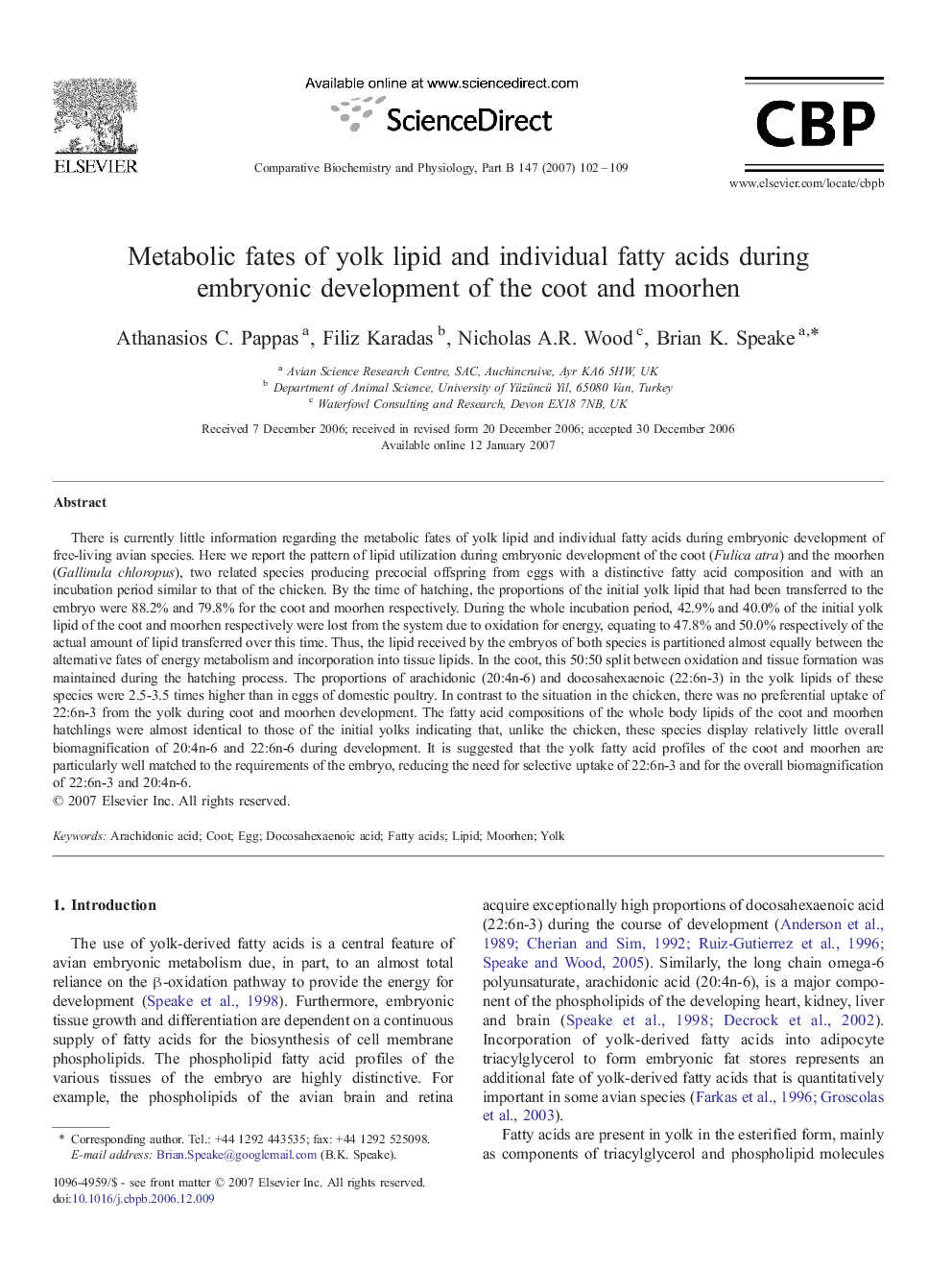| کد مقاله | کد نشریه | سال انتشار | مقاله انگلیسی | نسخه تمام متن |
|---|---|---|---|---|
| 1976796 | 1060707 | 2007 | 8 صفحه PDF | دانلود رایگان |
عنوان انگلیسی مقاله ISI
Metabolic fates of yolk lipid and individual fatty acids during embryonic development of the coot and moorhen
دانلود مقاله + سفارش ترجمه
دانلود مقاله ISI انگلیسی
رایگان برای ایرانیان
کلمات کلیدی
موضوعات مرتبط
علوم زیستی و بیوفناوری
بیوشیمی، ژنتیک و زیست شناسی مولکولی
زیست شیمی
پیش نمایش صفحه اول مقاله

چکیده انگلیسی
There is currently little information regarding the metabolic fates of yolk lipid and individual fatty acids during embryonic development of free-living avian species. Here we report the pattern of lipid utilization during embryonic development of the coot (Fulica atra) and the moorhen (Gallinula chloropus), two related species producing precocial offspring from eggs with a distinctive fatty acid composition and with an incubation period similar to that of the chicken. By the time of hatching, the proportions of the initial yolk lipid that had been transferred to the embryo were 88.2% and 79.8% for the coot and moorhen respectively. During the whole incubation period, 42.9% and 40.0% of the initial yolk lipid of the coot and moorhen respectively were lost from the system due to oxidation for energy, equating to 47.8% and 50.0% respectively of the actual amount of lipid transferred over this time. Thus, the lipid received by the embryos of both species is partitioned almost equally between the alternative fates of energy metabolism and incorporation into tissue lipids. In the coot, this 50:50 split between oxidation and tissue formation was maintained during the hatching process. The proportions of arachidonic (20:4n-6) and docosahexaenoic (22:6n-3) in the yolk lipids of these species were 2.5-3.5 times higher than in eggs of domestic poultry. In contrast to the situation in the chicken, there was no preferential uptake of 22:6n-3 from the yolk during coot and moorhen development. The fatty acid compositions of the whole body lipids of the coot and moorhen hatchlings were almost identical to those of the initial yolks indicating that, unlike the chicken, these species display relatively little overall biomagnification of 20:4n-6 and 22:6n-6 during development. It is suggested that the yolk fatty acid profiles of the coot and moorhen are particularly well matched to the requirements of the embryo, reducing the need for selective uptake of 22:6n-3 and for the overall biomagnification of 22:6n-3 and 20:4n-6.
ناشر
Database: Elsevier - ScienceDirect (ساینس دایرکت)
Journal: Comparative Biochemistry and Physiology Part B: Biochemistry and Molecular Biology - Volume 147, Issue 1, May 2007, Pages 102-109
Journal: Comparative Biochemistry and Physiology Part B: Biochemistry and Molecular Biology - Volume 147, Issue 1, May 2007, Pages 102-109
نویسندگان
Athanasios C. Pappas, Filiz Karadas, Nicholas A.R. Wood, Brian K. Speake,